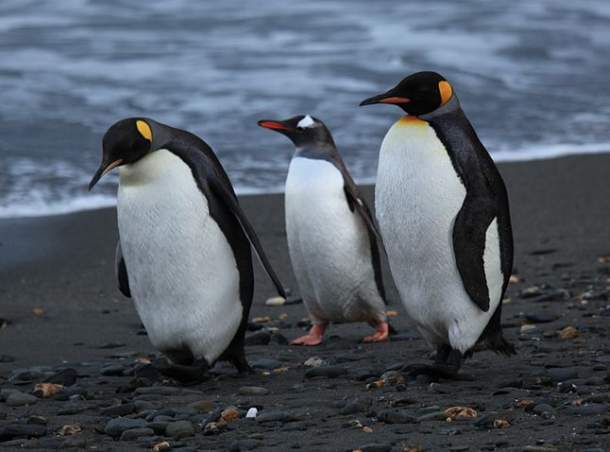A lot of human beings are monogamous, but did you know that hardly any other animals practice any form of monogamy?
In nature, monogamous pairing refers to mating systems where a pair of animals stick together to raise their offspring. That “family” structure is actually the main feature of the monogamy. This isn’t quite the same thing as sexual monogamy, though the two usually go hand in hand.
According to the National Science Foundation, scientists currently estimate that only about 3-5% of the mammal species on Earth practice monogamy, whether for the short term or the long term. Very few birds, fish, or amphibians practice monogamy. Believe it or not, some insects are monogamous.
Monogamy and mating for life aren’t interchangeable. These are two separate but related concepts. Many animals are serially monogamous, meaning they pair up with one partner at a time to raise offspring, but then pair up with a new partner the next year (rather like some human beings, who go from marriage to marriage throughout their lives).
Likewise, you may have a pair of animals that mates for life, but not monogamously—they may have other pairings outside the main pairing, but may never “divorce.” Here are 10 monogamous animals which actually mate for life. As you will see, this isn’t a universal trait among most species, but rather an individual choice.
1. Gibbons

Gibbons (Photo credit: Wikipedia)
A gibbon is a kind of furry ape which mates for life. Sexual dimorphism, a term referring to the physiological differences between males and females, is relatively unpronounced, which contributes to a higher degree of equality between the sexes. Paired gibbons not only mate together and raise offspring together, but spend a lot of time grooming each other and doing other shared activities. In the past it was believed that gibbons were all quite exclusive, but recent research has revealed that there are more than a few cheating gibbons out there, and a few divorced gibbons as well.
2. Swans

Swans (Photo credit: Marek Szczepanek | Wikimedia Commons)
Swans are some of the best known long-term pairing animals.This makes them something of a rarity among birds; they do not always mate for life, and some swans have “a little something on the side.” But there are swans which mate for life. The difficulties and time involved with migration and other aspects of swan life probably have contributed to the tendency to form long-term partnerships.
3. French angelfish

French Angelfish (Photo credit: flickker photos | Flickr)
While monogamy among fish is pretty rare, this particular type of fish often mates for life, and you will generally see them traveling together in pairs. They are also very territorial, and will often team up to defend their turf.
4. Wolves

Korean wolves mating at the Tama zoo (Photo credit: Wikipedia)
Wolves are probably more loyal to their families than most human beings are to theirs. Wolves commonly mate for life, and relationships among brothers and sisters in the pack are often as fierce as the bond between their parents. This is not to say that wolf pack life can’t become quite political, however, and wolves may well turn against one of their own, given enough reasons.
5. Penguins

Two king penguins with a Gentoo penguin (Photo credit: Wikipedia)
Penguins, another species that faces numerous challenges when it comes to raising offspring in a harsh environment, will sometimes mate for life. They have received a great deal of attention for their mating patterns, perhaps as much for the hardships that they face as their tendency to pair up loyally. Like human beings, they may also be serially monogamous or have more than one partner. Those with the shortest breeding season interestingly enough seem to have the lowest rate of divorce.
6. Termites

Worker termite (Photo credit: Wikipedia)
7. Prairie voles

Prairie Voles (Photo credit: OSU)
8. Bald eagles

Bald eagles mating (Photo credit: Dan Pancamo | Flickr)
9. Parasitic schistosoma mansoni worms

Parasitic schistosoma mansoni worms (Photo credit: cdc.gov)
10. Cockroaches

Cockroaches (Photo credit: Kevin Gillespie)
What is the overall portrait we see here when we examine the facts? Human beings are still, on the whole, some of the most commonly monogamous animals on the planet. However, there are a few species, like prairie voles, eagles, and wolves, that probably outdo us in that respect.
But perhaps the most noticeable pattern is that monogamy, whether serial or not, is largely a matter of choice in any species, human or otherwise. There is no single species which always mates for life, and even among species where mating for life is relatively uncommon, it still sometimes occurs. As always, an observation of nature ultimately points toward diversity.